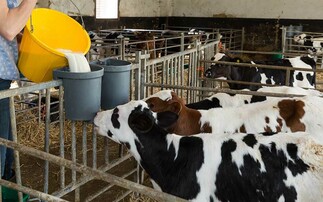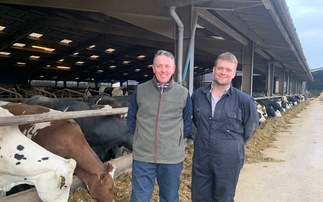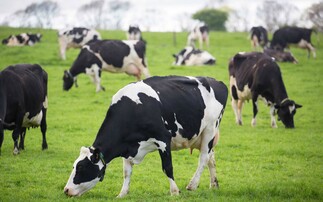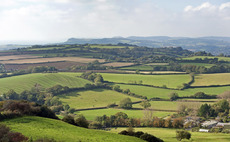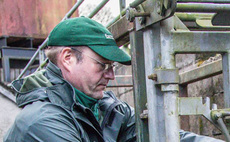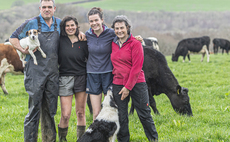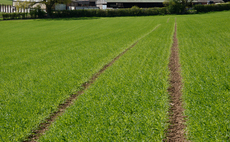
I would describe recent events for New Zealand dairy farmers as ‘concerning', especially in light of a couple of particularly depressing Global Dairy Trade auctions, which has seen the Fonterra payout fall twice in as many weeks.
Fonterra, the main milk buyer and a co-operative, had just slashed its predicted payout by a dollar when it ‘trimmed' another 25c (13p) from the price of a kilo of milk solids to $6.75kg (3.14GBP/kg).
This has put the cost of production under real scrutiny, and I've been spending considerable time consulting dairy farmers on targeted animal health spend with the aim to optimise return and minimise waste while maintaining welfare.
Debt
While we are not likely to see the dreaded low payouts of just $4.40kg (£2.24/kg) per milk solid, that were seen in 2014-2015, this recent fall in payout threatens many farms that are overburdened with debt and high farm working expenses.
To continue on in a rather dreary note, my farming clientele have suffered a particularly harsh winter. In Northland, a wet, mild winter is expected, but this year has seen an unrelenting deluge fall on some farms.
With many of my farmers milking cows on land that is at, or slightly below, sea level, this heavy country has seen farmers unable to graze dairy cows for fear of damaging pasture.
Health issues
Standing off cows on feedpads, laneways and herd homes (where available) has been the norm, and there have been numerous animal health issues as a result.
We recently held an event at the local War Memorial Hall with a brilliant charity — Rural Support Trust — to get farmers off-farm and have a decent laugh, a good feed, and a beer.
While nattering away with the owners of one of the smaller herds in the district about which of the main Australasian horse races we planned on attending this year, it made me realise how petty my own problems are.
He, still milking 90 cows at 71, had seen it all before. The boom and bust of the dairy industry, market volatility, decoupling from the UK, the lot. Perhaps we should all take a leaf from his book and live from one Melbourne Cup to the next!
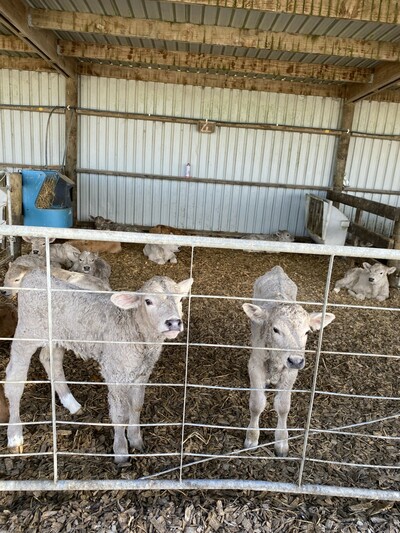
Driving off-farm the other day, I had to stop myself to smile at the new wave of calves that have arrived in the pens.
Increased consumer pressure has threatened the ‘bobby' calf industry, and in true New Zealand form, the market has created a solution.
‘Bobby' calves, which gained their name from their historical value of a shilling apiece, are marketed and often slaughtered from four days old.
Understandably, the consumer has expressed concern over this practice, and farmers, not the government, have reacted to great effect. I nearly stalled my Hilux truck to see glorious Charolais calves skipping around the pen.
Many farmers have invested in Charolais, Angus or even Belgian Blue bulls for tailing off after an initial six weeks of artificial insemination with dairy breeding.
Valuable calves
These far more valuable calves are quickly snapped up for more than $100/head (£45) and taken on for rearing.
Easy-calving genetics means my evenings and weekends are safe as, touch wood, I've yet to perform a caesarean section despite being more than eight weeks in to calving.
What a fantastic example of the need for market-based solutions to societal pressures on agriculture.
There's patchy pasture cover out there, but it has been difficult to access anything due to the horrible conditions and risk of pugging the pasture.
Most of my farmers have applied N by now, using the local helicopter service. Timing has been critical to prevent excessive runoff and improve nitrogen use efficiency.
With the (relatively) new limits of 190 tonnes of nitrogen per hectare and an increasing cost associated with all forms of nitrogenous fertiliser, efficient use has become critical.
Milking frequency
Interestingly, a number of once-a-day (OAD) milking herds locally have decided to milk twice daily. This shift is an interesting reaction to the reduction in payout, and I can't see it paying off, personally.
Northland has a significant number of herds that milk OAD, and it really suits a lot of farms. This reversion to twice-a-day milking will be an interesting experiment as most farmers realise how much better life is milking OAD and stay that way.
The reduction in yield isn't as bad as we once thought, and the increased costs of milking a herd twice daily can outweigh the production gains in lower output, pasture-based herds.
Staffing seems to be a continual concern for my clients. Local labour can often be unreliable and costly, while bringing team members in through immigration channels can be complex and problematic with current regulations.
Lameness
From a veterinary point of view, the wet conditions have caused an increased incidence of lameness and mastitis on farm.
A number of our clients have Mastatest technology on farm now, giving sample results and treatment recommendations in 25 hours. This has been a revelation — improving treatment success rates, reducing antibiotic usage and improving bulk tank cell counts.
It is amazing how far we have come, from a vague stab in the dark when treating mastitis to this careful targeted approach. It's all cloud based and farmers can call me to discuss any worries as I immediately have access to all of my client's results via email.
We've seen an increase in the diagnosis of Serratia, a mastitis pathogen which is frustrating to deal with. This seems to be a nationwide trend, but is particularly prevalent in the North Island.
I contributed towards a paper on this to be presented at the recent veterinary conference and it's amazing how many other farmers and vets were also quietly struggling to manage this tricky bug!
Turkeys
Away from work, my partner's father and I managed to get out shooting turkeys last weekend with considerable success. The local rule is that you should not hunt turkeys in months containing an ‘r', so time was running out.
The reason for this seems to vary depending on who you ask, but most say it is due to the taint of the meat as the big birds begin to eat crickets in the warmer months.
Regardless, we conjured up a very average curry that was washed down with some celebratory beers!
- Rory Dean is a self-employed large animal veterinarian who practices in the Kaipara region of Northland, New Zealand. After graduating from Edinburgh in 2015, he has spent most of his practicing career in rural New Zealand, and holds a postgraduate diploma in agricultural science as well as membership with the Australia and New Zealand College of Veterinary Scientists.
For more dairy blogs click here








